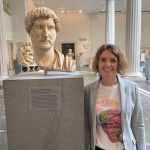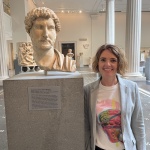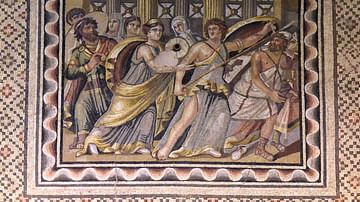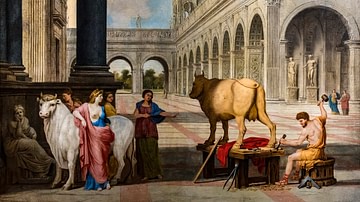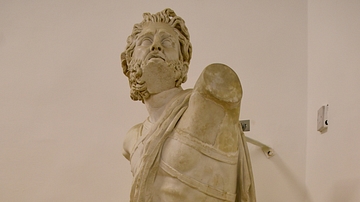Illustration
The mosaic of Daedalus, Icarus, and Pasiphaë from Zeugma depicts the wife of King Minos of Crete Pasiphaë (ΦACIΦAH), an unidentified maiden, and her nanny Trophos (TPOΦOC) watching as Daedalus (ΔΕɅɅΟC) and his son Icarus (ΕIKAPOC) make a wooden effigy of a cow. Dated to the end of the 2nd century CE.
Zeugma Mosaic Museum, Gaziantep, Turkey.
About the Author
Cite This Work
APA Style
Raddato, C. (2023, January 17). Mosaic of Daedalus, Icarus, and Pasiphaë from Zeugma. World History Encyclopedia. Retrieved from https://www.worldhistory.org/image/16864/mosaic-of-daedalus-icarus-and-pasiphae-from-zeugma/
Chicago Style
Raddato, Carole. "Mosaic of Daedalus, Icarus, and Pasiphaë from Zeugma." World History Encyclopedia. Last modified January 17, 2023. https://www.worldhistory.org/image/16864/mosaic-of-daedalus-icarus-and-pasiphae-from-zeugma/.
MLA Style
Raddato, Carole. "Mosaic of Daedalus, Icarus, and Pasiphaë from Zeugma." World History Encyclopedia. World History Encyclopedia, 17 Jan 2023, https://www.worldhistory.org/image/16864/mosaic-of-daedalus-icarus-and-pasiphae-from-zeugma/. Web. 04 Jul 2025.
